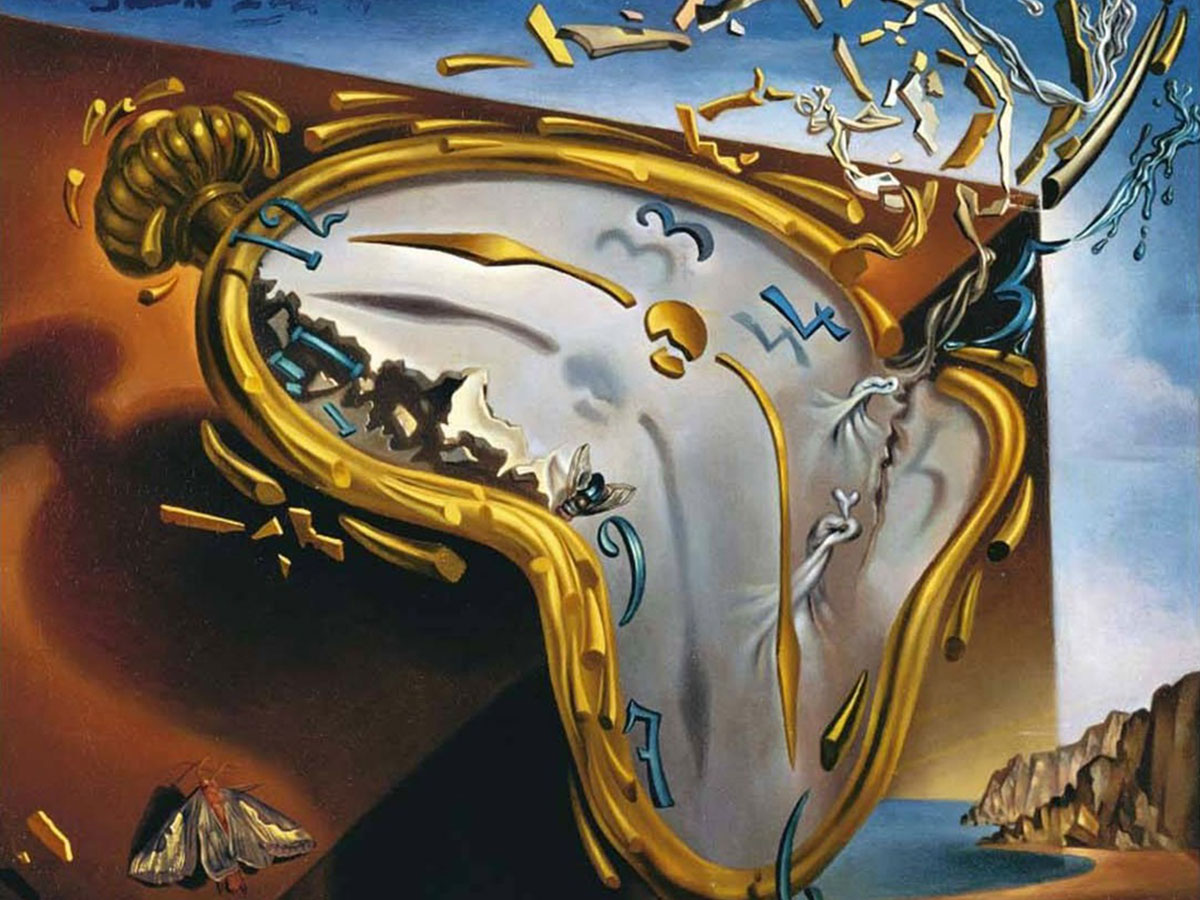

Dalí: Hitting His Surreal Stride
Through his studies of master works, colleagues, and the modern Dada movement, Dalí honed in on Surrealism, the style which would put him in the world's eye. In 1929, he made oil paintings that were small collages of his dream images. His work employed a meticulous classical technique, influenced by Renaissance artists, that contradicted the "unreal dream" space he created with strange hallucinatory characters. Dalí's major contribution to the Surrealist Movement was what he called the "paranoiac-critical method," a mental exercise of accessing the subconscious to enhance artistic creativity.

In August, 1929, Dalí met Elena Dmitrievna Diakonova, a Russian immigrant. Also known as Gala, she became Dalí's muse, inspiration, and eventually his wife. She helped balance the creative forces in Dalí's life. With his wild expressions and fantasies, he was not capable of dealing with the business side of being an artist. Gala took care of his legal and financial matters, and negotiated contracts with dealers and exhibition promoters. They were married in a civil ceremony in 1934.